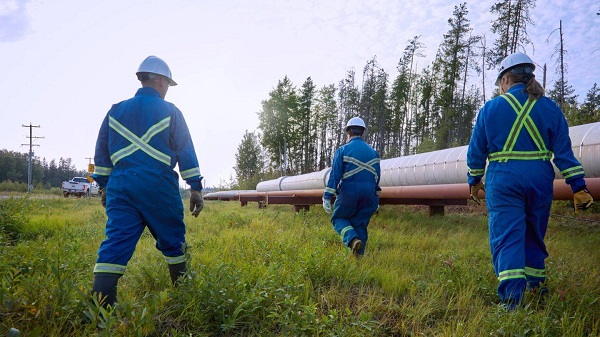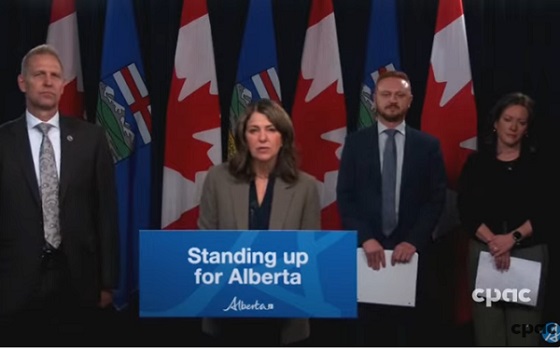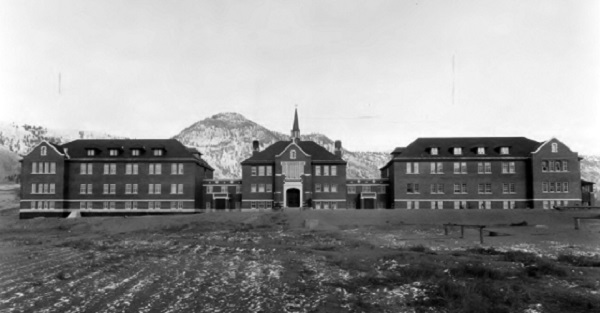Alberta
A regional comparison of ALERT crime stats for 2019 – Arrests, Charges, Guns, Drugs off the streets

From the Alberta Law Enforcement Response Team
Transition, Triumph for ALERT in 2019
While changes were afoot, including a new CEO, Alberta Law Enforcement Response Teams still managed to achieve one of its most successful years ever in 2019.
Over the calendar year, ALERT teams across the province laid 1,402 criminal charges against 241 suspects; took 92 firearms out of the hands of gang members and drug dealers; seized more than $4 million in proceeds of crime; and removed nearly $13 million worth of cocaine, fentanyl and methamphetamine from the streets of Alberta communities.
“Since being appointed chief executive officer in August 2019, I’ve been very impressed with ALERT’s operations and the results the organization is able to achieve,” said ALERT CEO Supt. Dwayne Lakusta. “It’s a fast-paced, ever-changing landscape, but our front-line investigators and support staff behind the scenes do exceptional work to keep up and deliver the results Albertans expect.”
ALERT is mandated to address organized and serious crime across Alberta, with regional offices located in Calgary, Edmonton, Fort McMurray, Grande Prairie, Lethbridge, Medicine Hat, and Red Deer. A breakdown of statistics by region for the 2019 calendar year is available on ALERT’s website and YouTube channel.
The biggest highlight of the year for ALERT was Project Coyote, a joint investigation with the U.S. Drug Enforcement Administration that resulted in record amounts of cocaine and fentanyl pills seized. All told, over the course of two years, Project Coyote resulted in the seizure of $15 million worth of drugs, including 81.5 kilograms of cocaine in Houston, Texas, and 250,000 fentanyl pills in a Calgary apartment.
“Project Coyote was a lengthy, complex investigation, and I applaud our team in Calgary for their ongoing commitment to the investigation,” Lakusta said. “It’s a significant bust, and a great example of the efforts taken by our teams to fight organized crime.”
Some of ALERT’s other successes in 2019 include: outlaw bikers arrested for drug trafficking in Red Deer; a firearms straw purchaser foiled in Grande Prairie; a B.C.-Edmonton drug pipeline cut off; a record meth seizure in Medicine Hat; an arrest made in Lethbridge in a series of vehicle thefts; and two children being rescued as result of a child exploitation investigation.
A compilation of highlights from 2019 is available on ALERT’s website.
With new funding foreshadowed in the recent provincial budget and ALERT’s successes from 2019 to build upon, Lakusta is looking forward to expanding on the organization’s important work in 2020.
“We are excited to enhance opportunities to make communities across Alberta safer,” Lakusta said. “By working closely with other law enforcement agencies and community partners, we will continue to work toward our goals of disrupting and dismantling organized crime.”
Members of the public who suspect drug or gang activity in their community can call local police, or contact Crime Stoppers at 1-800-222-TIPS (8477). Crime Stoppers is always anonymous.
ALERT was established and is funded by the Alberta Government and is a compilation of the province’s most sophisticated law enforcement resources committed to tackling serious and organized crime.

Alberta
‘Existing oil sands projects deliver some of the lowest-breakeven oil in North America’

From the Canadian Energy Centre
By Will Gibson
Alberta oil sands projects poised to grow on lower costs, strong reserves
As geopolitical uncertainty ripples through global energy markets, a new report says Alberta’s oil sands sector is positioned to grow thanks to its lower costs.
Enverus Intelligence Research’s annual Oil Sands Play Fundamentals forecasts producers will boost output by 400,000 barrels per day (bbls/d) by the end of this decade through expansions of current operations.
“Existing oil sands projects deliver some of the lowest-breakeven oil in North America at WTI prices lower than $50 U.S. dollars,” said Trevor Rix, a director with the Calgary-based research firm, a subsidiary of Enverus which is headquartered in Texas with operations in Europe and Asia.
Alberta’s oil sands currently produce about 3.4 million bbls/d. Individual companies have disclosed combined proven reserves of about 30 billion barrels, or more than 20 years of current production.
A recent sector-wide reserves analysis by McDaniel & Associates found the oil sands holds about 167 billion barrels of reserves, compared to about 20 billion barrels in Texas.
While trade tensions and sustained oil price declines may marginally slow oil sands growth in the short term, most projects have already had significant capital invested and can withstand some volatility.
“While it takes a large amount of out-of-pocket capital to start an oil sands operation, they are very cost effective after that initial investment,” said veteran S&P Global analyst Kevin Birn.
“Optimization,” where companies tweak existing operations for more efficient output, has dominated oil sands growth for the past eight years, he said. These efforts have also resulted in lower cost structures.
“That’s largely shielded the oil sands from some of the inflationary costs we’ve seen in other upstream production,” Birn said.
Added pipeline capacity through expansion of the Trans Mountain system and Enbridge’s Mainline have added an incentive to expand production, Rix said.
The increased production will also spur growth in regions of western Canada, including the Montney and Duvernay, which Enverus analysts previously highlighted as increasingly crucial to meet rising worldwide energy demand.
“Increased oil sands production will see demand increase for condensate, which is used as diluent to ship bitumen by pipeline, which has positive implications for growth in drilling in liquids-rich regions such as the Montney and Duvernay,” Rix said.
Alberta
It’s On! Alberta Challenging Liberals Unconstitutional and Destructive Net-Zero Legislation

“If Ottawa had it’s way Albertans would be left to freeze in the dark”
The ineffective federal net-zero electricity regulations will not reduce emissions or benefit Albertans but will increase costs and lead to supply shortages.
The risk of power outages during a hot summer or the depths of harsh winter cold snaps, are not unrealistic outcomes if these regulations are implemented. According to the Alberta Electric System Operator’s analysis, the regulations in question would make Alberta’s electricity system more than 100 times less reliable than the province’s supply adequacy standard. Albertans expect their electricity to remain affordable and reliable, but implementation of these regulations could increase costs by a staggering 35 per cent.
Canada’s constitution is clear. Provinces have exclusive jurisdiction over the development, conservation and management of sites and facilities in the province for the generation and production of electrical energy. That is why Alberta’s government is referring the constitutionality of the federal government’s recent net-zero electricity regulations to the Court of Appeal of Alberta.
“The federal government refused to work collaboratively or listen to Canadians while developing these regulations. The results are ineffective, unachievable and irresponsible, and place Albertans’ livelihoods – and more importantly, lives – at significant risk. Our government will not accept unconstitutional net-zero regulations that leave Albertans vulnerable to blackouts in the middle of summer and winter when they need electricity the most.”
“The introduction of the Clean Electricity Regulations in Alberta by the federal government is another example of dangerous federal overreach. These regulations will create unpredictable power outages in the months when Albertans need reliable energy the most. They will also cause power prices to soar in Alberta, which will hit our vulnerable the hardest.”
Finalized in December 2024, the federal electricity regulations impose strict carbon limits on fossil fuel power, in an attempt to force a net-zero grid, an unachievable target given current technology and infrastructure. The reliance on unproven technologies makes it almost impossible to operate natural gas plants without costly upgrades, threatening investment, grid reliability, and Alberta’s energy security.
“Ottawa’s electricity regulations will leave Albertans in the dark. They aren’t about reducing emissions – they are unconstitutional, ideological activist policies based on standards that can’t be met and technology that doesn’t exist. It will drive away investment and punish businesses, provinces and families for using natural gas for reliable, dispatchable power. We will not put families at risk from safety and affordability impacts – rationing power during the coldest days of the year – and we will continue to stand up for Albertans.”
“Albertans depend on electricity to provide for their families, power their businesses and pursue their dreams. The federal government’s Clean Electricity Regulations threaten both the affordability and reliability of our power grid, and we will not stand by as these regulations put the well-being of Albertans at risk.”
Related information
- Conference Board of Canada socio-economic Impacts of Canada’s 2030 Emissions Reduction Plan – (April 2025)
- Alberta Electric System Operator’s position on Canadian Energy Regulations
-

 Business2 days ago
Business2 days agoNew federal government plans to run larger deficits and borrow more money than predecessor’s plan
-

 Business2 days ago
Business2 days agoScott Bessent says U.S., Ukraine “ready to sign” rare earths deal
-

 International2 days ago
International2 days agoJavier Millei declassifies 1850+ files on Nazi leaders in Argentina
-

 Business1 day ago
Business1 day agoTrump’s bizarre 51st state comments and implied support for Carney were simply a ploy to blow up trilateral trade pact
-

 Frontier Centre for Public Policy1 day ago
Frontier Centre for Public Policy1 day agoTrust but verify: Why COVID-19 And Kamloops Claims Demand Scientific Scrutiny
-

 Alberta1 day ago
Alberta1 day agoAlberta’s future in Canada depends on Carney’s greatest fear: Trump or Climate Change
-

 COVID-191 day ago
COVID-191 day agoStudy finds Pfizer COVID vaccine poses 37% greater mortality risk than Moderna
-

 Alberta2 days ago
Alberta2 days agoPreston Manning: Canada is in a unity crisis







